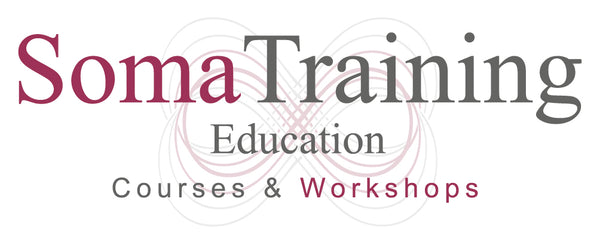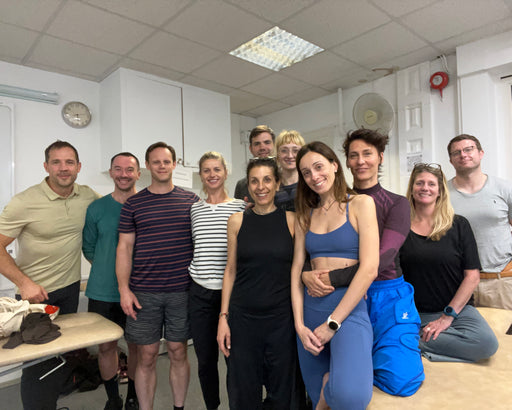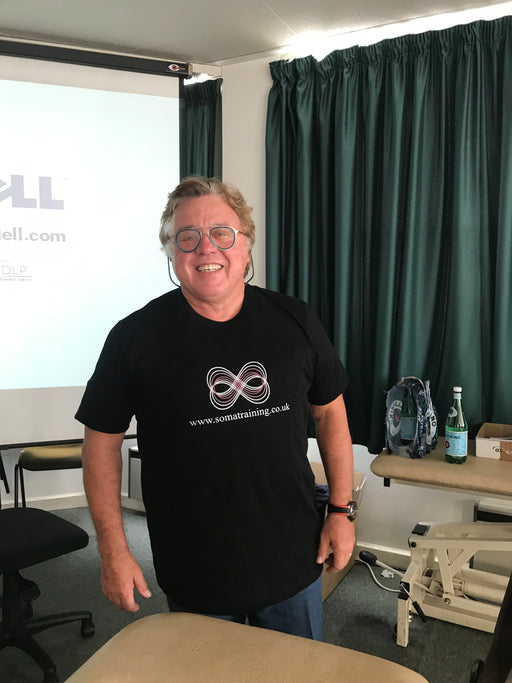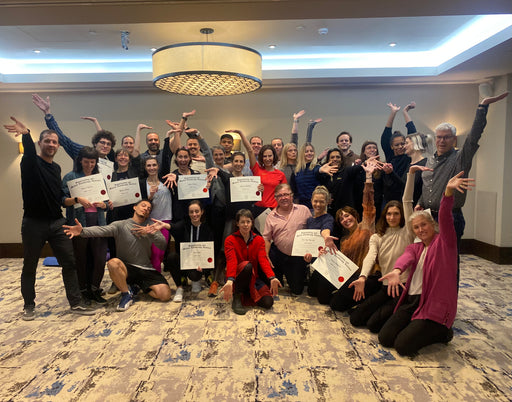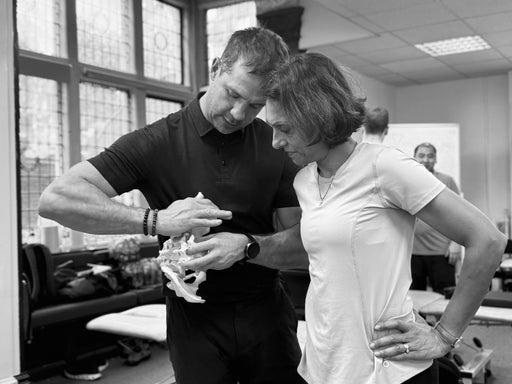FREQUENTLY ASKED QUESTIONS
Why would you recommend your courses to qualified physiotherapists and osteopaths? Haven’t they learned about exercise and manual therapy at school?
Both physiotherapists and osteopaths learn exercises and manual therapy techniques as part of their training at school. Most schools however teach relatively basic, non-specific exercise and manual techniques. These techniques tend to be memorized in a somewhat linear, procedure-based model; a one size fits all kind of approach.
Our programs build on physiotherapists’ and osteopaths’ knowledge mainly by deepening their level of anatomical and biomechanical understanding of the body while teaching them numerous very precise exercise or manual therapy techniques to address most mechanically important anatomical links in the body.
What makes SomaTRAINING so unique?
“The level of anatomy, the number of quality exercise techniques and the thinking process that allows for sniper like application”
In the SomaTRAINING program you will learn to look at human movement from a biomechanics and relational anatomy perspective, so you’re constantly thinking mechanics.
This analytical perspective, over the course of the program will help you deepen your understanding of anatomy, biomechanics and physiology in both function and dysfunction. This “new pair of eyes”, renewed thinking and deeper understanding of movement will allow for the creation and sniper-like application of numerous specific exercises techniques for the targeted anatomy.
“Once you start to see the precise interrelational functioning of joints, it becomes obvious how altered function at one end can cause dysfunction of a joint somewhere else in the chain. The beauty here is that you will learn a bunch of precise exercises techniques to address these dysfunctions both segmental and globally.”
The SomaTRAINING program will give you all the techniques and understanding you need to effectively train the human body respecting its anatomy, physiology and biomechanics, whether in pain or in high-level performance.
Why is SomaTHERAPY so effective?
The thinking process
The SomaTHERAPY treatment process is not a linear treatment protocol. It appreciates function and dysfunction in its complexity and interactivity. There is an ongoing interaction between the therapist and the patient/client where the process of treatment and evaluation happen simultaneously.
The techniques
In Guy Voyer’s SomaTHERAPY program, Osteo-articular Joint Pumping, Fascial Normalization and Transverse Tendonious & Ligamentous Stretching (TTLS) are the three main techniques used to address the varied needs of the fasciae.
A precise understanding of the anatomical, biochemical, and histological constructs of the fasciae leads one to the awareness of the need for many types of treatment for the fasciae.
Structure governs function. The SomaTHERAPY program will give you essentially all manual techniques you’ll need to effectively treat the musculoskeletal system and produce lasting effects.
What is the class format and starting times?
The practical part of each SomaTHERAPY and SomaTRAINING course is presented in a 2-day workshop format from 9am-6pm on Saturday-Sunday. The theory part of the course is a 6.5 hour long pre-recorded lecture from the program creator, the late Guy Voyer DO. This lecture consists of an anatomy and biomechanics presentations and real life and clinical scenarios with examples of applications. There is a separate sign-up link on the course page for the theory part of the course. Students need to view this lecture prior to attending the practical course.
What is included in my registration fee for the SomaTherapy Courses?
Printed or Electronic Manuals (techniques & anatomy)
Course supplies & equipment
Snacks and water
Follow up support
Can I bring my own food/meals to the course?
You are welcome to bring in outside food. Please keep in mind however, that we do not have much refrigeration space for foods that need to be kept cold. So please plan accordingly.
How many students in each classroom?
We strive to maintain a high quality of our courses, and therefore keep our registration to maximum 16-20 participants per course.
Am I allowed to take individual courses or must I attend the entire program?
You are welcome to register for individual courses or attend the entire program with us. There is simply a pre-requisite for entering the program. One must have completed the Pumping Series to enter any later series within the program.
What language are the courses in?
All courses are taught in English.
What is the structure of the course?
Since most of our courses now have online lectures, that students need to review before attending the practical workshop, the weekend course is dedicated to learning the real-life application (we call technomethodology) of biomechanics and exercise techniques, with SomaTRAINING and ELDOA courses while the focus is on palpation skills, therapeutic touch and practical execution and application of all manual techniques with SomaTHERAPY.
